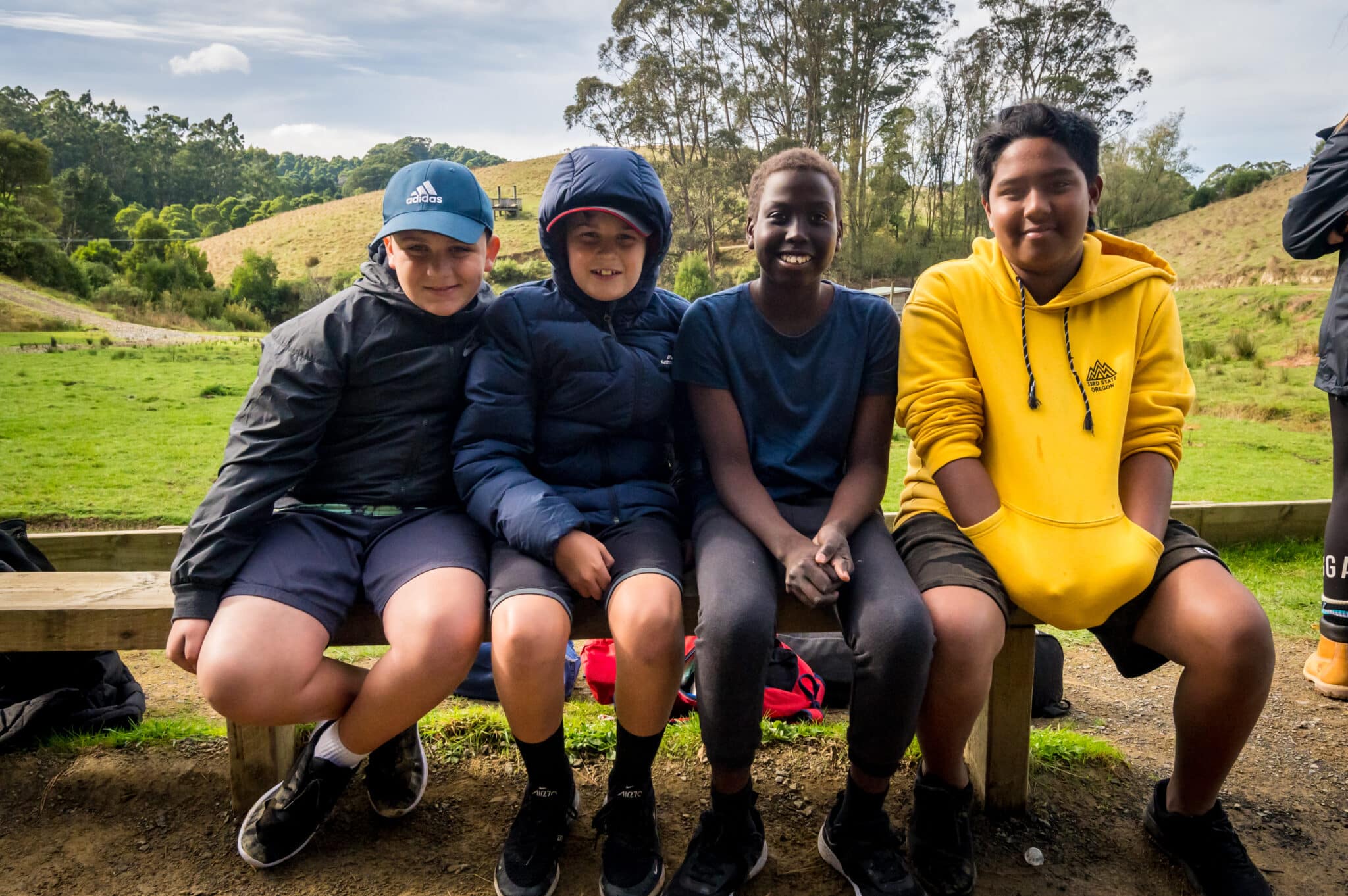Are your students preparing to transition from primary to high school? This shift marks an important milestone in their personal and educational journey. While it’s an exciting step forward, it can also bring up feelings of anxiety and uncertainty. The prospect of a new, larger school environment, unfamiliar faces, and higher expectations can be overwhelming.
In this article, we’ll look at why the primary to high school transition matters and share five practical ways teachers can support their students through it. We’ll also include a few bonus tips for parents to help at home.
When do pupils transition from primary to secondary schools in Australia?
As a teacher, you’re likely familiar with the general timing, but let’s quickly recap when this transition usually takes place. Most students finish primary school at the end of Year 6 and begin secondary school in Year 7, typically around the age of 11 or 12.
While each state and territory may have slight differences in curriculum structure or school systems, it is a key time of change for students across the country. Understanding this age range helps educators and parents better prepare students for the academic and social changes that come with entering high school.
Why the transition from primary to high school matters
More than just a change of location, the transition to secondary school is a big step up as children grow into teenagers and, eventually, young adults.
From making new friends to learning more advanced subjects, the whole process brings a mix of excitement and uncertainty. Here’s why it has such a profound impact on a child’s academic, social, and emotional well-being:
Academic progression
High school introduces new subjects like Algebra in maths, Biology or Physics in science, or new languages such as Japanese or French. They may also face new teaching styles, where lessons may be more lecture-based.
What’s more, students are expected to take more responsibility for their learning, keeping track of timetables across multiple classes. These increased demands require advanced self-management and study skills that some children may not have yet developed.
Increased independence and responsibility
With more structured schedules, new rules, and increased homework each week, students transitioning to high school are often expected to be more autonomous. They must manage their time effectively, stay organised, and meet deadlines, which helps them grow into more responsible and self-reliant individuals.
Additionally, high school students are also faced with making independent choices about their behaviour. Less direct supervision from adults means they must take more accountability when it comes to interacting with their peers, handling conflicts and managing their emotions.
Social and emotional changes
Leaving their familiar social circles in primary school and entering a larger, more diverse environment at secondary can be daunting. Students face the challenge of making new friends, understanding different social dynamics, and potentially dealing with peer pressure.
However, this all contributes to their own personal growth, helping them develop stronger social skills as they gradually build confidence, learn to accept different perspectives, and form positive connections in a broader community.
Biological shift
With so many changes, the transition from primary to high school is also crucial as it highlights the beginning of a child’s biological shift. During this time, students experience physical and hormonal changes as they turn into teenagers.
This period of adolescence is characterised by the development of cognitive abilities, including abstract thinking, emotional changes like mood swings and heightened sensitivity, while socially, there is a growing focus on relationships, personal values and identity.
Leaves a lasting impression
A positive primary to high school transition sets the stage for long-term success both in education and life. Students who feel supported are more likely to engage confidently in new environments, transfer the skills and knowledge gained from their experiences to future challenges, and develop a growth mindset.
This, in turn, contributes to better academic outcomes and improved well-being as they are more likely to take on challenges, persevere through setbacks, and maintain a positive attitude towards learning.

Five ways teachers can support students’ transition to high school
Teachers play a critical role in helping pupils transition from primary to high school. Besides parents, they are often one of the first people kids turn to for support during this big change. That’s why it’s so important to create a supportive, structured space that helps students adjust with confidence.
Here are five simple but effective strategies educators can use to offer the support students need and make the transition as smooth as possible:
1. Encourage independence
Helping students develop self-reliance and independence is key in preparing them for high school. As mentioned previously, secondary school success hinges on a student’s ability to manage their learning, meet deadlines, and solve problems on their own.
You can lay the groundwork by setting realistic goals, assigning projects that encourage planning and decision-making, or incorporating self-assessment tasks like journaling where students reflect on their progress. Teachers can also delegate classroom responsibilities like group leader or class monitor to help instill a sense of ownership.
In short, by empowering students to make decisions and take responsibility for their actions, you’re helping them build confidence and resilience.
2. Orientation programmes
Orientation programmes are invaluable tools for helping students feel settled when entering secondary school. It gives them a chance to familiarise themselves with their new environment, meet key staff members, and connect with future classmates.
With that said, consider hosting Q&A sessions where they can ask questions about school facilities (like lockers or the library), routines, or even club activities, while addressing any concerns they may have. Information sessions for both parents and students are also handy in outlining expectations, policies, and the curriculum.
This initial exposure will ease their anxiety and help them feel more prepared as they begin their high school journey.
3. Prepare in advance
Transitioning to high school can be academically challenging for some students due to the increased complexity of subjects and the pace of learning. Therefore, offering access to additional resources such as study guides, tutoring sessions, and online learning platforms can help strengthen their foundational knowledge, confidence, and study habits.
Beyond the educational aspects, sharing positive anecdotes from former students who have successfully gone through the transition from primary to high school can help build anticipation rather than apprehension. It’s also worth introducing students to common high school concepts like structured timetables and formal assessments (e.g. exams, essays, etc.).
By framing the change as an exciting new chapter rather than a source of fear is key. The more students know what to expect, the more confident and prepared they’ll feel.
4. Ice-breaker activities
Building relationships is crucial for how well new students adjust to high school, and that’s where ice-breaker activities come in! These help break down barriers, encourage students to make new friends, and boost their communication and social skills, making it easier for them to connect with peers.
Try team-building exercises such as building a bridge using everyday materials like straws and paper, solving a classroom scavenger hunt, or creative tasks like vision boards or story telling around the theme of starting high school.
These shared experiences not only help students bond and develop teamwork skills, but also gives them a chance to express their hopes, fears, and goals in a supportive space.
5. Offer emotional support
Everyone remembers their first day of high school, and the mixture of emotions we felt, from excitement and worry. To ease the transition from primary to high school, teachers can create a safe space where students feel comfortable expressing their feelings.
This can include offering one-on-one counselling sessions, where staff can lend a listening ear and teach them basic coping mechanisms for dealing with stress and change. Moreover, collaborating with parents establishes a unified approach to supporting the emotional well-being of students during this significant transitional period.
Overall, prioritising emotional support ensures that no child feels alone during their transition to high school.
Bonus: Parental tips for the primary to high school transition
We can’t overlook the role parents play in supporting their children through the primary school transition to high school. While it can be a little nerve-wracking to see your child put on a brand-new uniform and step into the unknown, there are plenty of ways you can help make their journey feel a little less daunting:
- Open communication: Talk regularly with your child about how they feel. Acknowledge both the positive and negative emotions, and offer plenty of reassurance.
- Get involved: Attend orientation sessions, open days, and school events. Being involved helps your child feel supported and shows them that you’re in it together.
- Practical preparation: Help your child get organised. Shop for school supplies and uniforms, and practise using public transport or walking routes if applicable.
- Establishing routines: Consistent routines for homework, bedtime, extracurricular activities, and screen time can provide a sense of stability.
- Positive reinforcement: Celebrate small wins, whether that’s packing their bag independently, completing homework, or making a new friend. Stay optimistic and reinforce the positives of high school life.
- Be patient: Remember that the transition to high school takes time. Avoid rushing, and understand that there will be ups and downs along the way.

Help your students transition from primary to secondary with a school adventure camp!
Looking for a unique and memorable way to support your students’ transition to high school? Consider booking a PGL outdoor primary school camp or secondary school camp!
Away from the classroom, students are given the opportunity to build confidence, develop independence, and strengthen social bonds in a fun and supportive setting. Through various challenges and adventurous activities, we help students become more resilient, adaptable, and prepared to embrace new experiences.
Whether it’s conquering a ropes course, working together to build a raft, or simply sharing a cabin, our school camps in both Queensland and Victoria create lasting memories that can ease anxiety and build excitement for the next stage in a student’s educational journey.
So, what are you waiting for? Contact us today, and we’ll help create an unforgettable experience that will set the tone for a successful transition to high school.

A qualified teacher and former university lecturer, Steve has been our Guest Experience Manager at Campaspe Downs for many years. Steve’s work at Victoria University, setting up the “Iramoo Sustainability Centre”, focused on restoring and protecting the native grasslands of western Victoria, as well as advising schools how to set up indigenous gardens. He has lectured on science, indigenous education and outdoor education.








